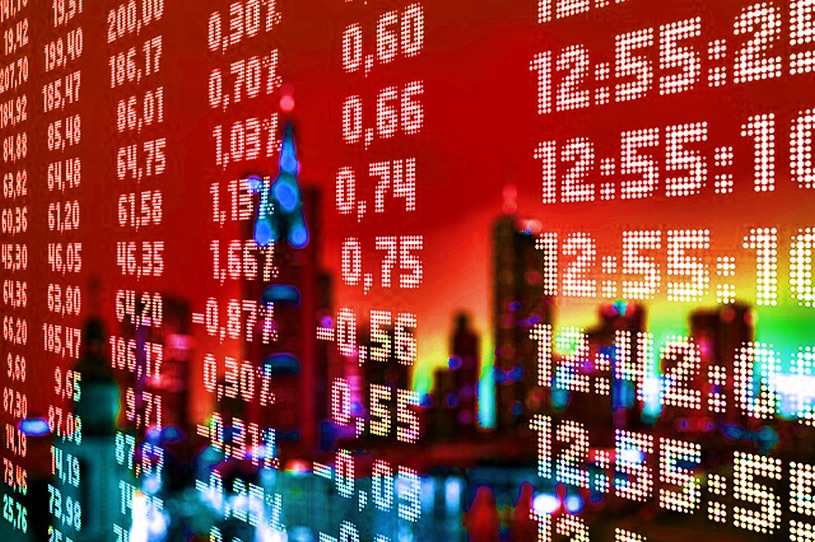Here’s what happened after the completion of a “bullish triangle”
By Elliott Wave International
A Charles Schwab survey shows that 15% of today’s retail investors started investing in 2020.
And, regarding 2021, an August 2 CNBC headline said:
New investors are jumping into the market
So, when you combine the influx from this year and last, that adds up to a lot of new investors.
This is mentioned because some people who are new to investing may see the phrase “emerging markets” and get the impression that this is synonymous with only small countries.
Yet, “emerging markets” covers 75% of the world’s population, and are comprised of nations like China, India, Russia, Brazil, South Korea, Thailand, Taiwan, Malaysia and more.
All told, emerging markets account for about a third of global GDP.
The point being — new and veteran investors alike should at least have emerging markets on their radar screen for consideration. Yes, there’s risk, yet there’s also opportunity.
Consider a classic Elliott wave pattern in the Vanguard FTSE Emerging Markets ETF.
The April 2020 Global Market Perspective, a monthly Elliott Wave International publication which covers 50+ worldwide financial markets, said:
Largest emerging markets ETF completes bullish triangle.
Of course, the completion of that bullish triangle implied that the next price move would be up.
That’s exactly what happened. Here’s a current chart from Mark Galasiewski, an Elliott Wave International global analyst who focuses on the Asian-Pacific:

As you can see, the Vanguard FTSE Emerging Markets ETF zoomed northward right after Mark’s bullish analysis in April 2020. Since then, the value of this exchange-traded fund has increased by approximately 55%.
Keep in mind that the Global Market Perspective is filled with charts and analysis based on the Elliott wave model.
The Elliott wave model works for any widely traded financial market in the world because the patterns of investor psychology are the same in, say, Japan as they are in Germany, France, India or any another nation.
Read this quote from Frost & Prechter’s Elliott Wave Principle: Key to Market Behavior:
In its broadest sense, the Wave Principle suggests the idea that the same law that shapes living creatures and galaxies is inherent in the spirit and activities of men en masse. Because the stock market is the most meticulously tabulated reflector of mass psychology in the world, its data produce an excellent recording of man’s social psychological states and trends. This record of the fluctuating self-evaluation of social man’s own productive enterprise makes manifest specific patterns of progress and regress. What the Wave Principle says is that mankind’s progress (of which the stock market is a popularly determined valuation) does not occur in a straight line, does not occur randomly, and does not occur cyclically. Rather, progress takes place in a “three steps forward, two steps back” fashion, a form that nature prefers. More grandly, as the activity of social man is linked to the Fibonacci sequence and the spiral pattern of progression, it is apparently no exception to the general law of ordered growth in the universe. In our opinion, the parallels between the Wave Principle and other natural phenomena are too great to be dismissed as just so much nonsense. On the balance of probabilities, we have come to the conclusion that there is a principle, everywhere present, giving shape to social affairs, and that Einstein knew what he was talking about when he said, “God does not play dice with the universe.” The stock market is no exception, as mass behavior is undeniably linked to a law that can be studied and defined. The briefest way to express this principle is a simple mathematical statement: the 1.618 ratio.
Get the details of how the Fibonacci sequence of numbers provides the mathematical basis for the Wave Principle by reading the online version of Elliott Wave Principle: Key to Market Behavior for free.
All that’s required for free access to this Wall Street classic is a Club EWI membership. Club EWI is the world’s largest Elliott wave educational community and is free to join. Members enjoy free access to a wealth of Elliott wave resources on investing and trading without any obligations.
Just follow this link to get started: Elliott Wave Principle: Key to Market Behavior — free and unlimited access.
This article was syndicated by Elliott Wave International and was originally published under the headline How Emerging Markets ETF Followed a Classic Elliott Wave Pattern. EWI is the world’s largest market forecasting firm. Its staff of full-time analysts led by Chartered Market Technician Robert Prechter provides 24-hour-a-day market analysis to institutional and private investors around the world.
